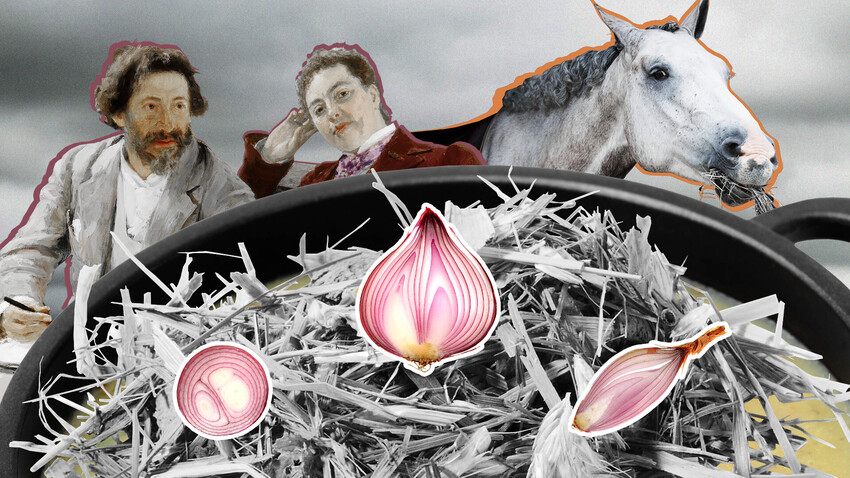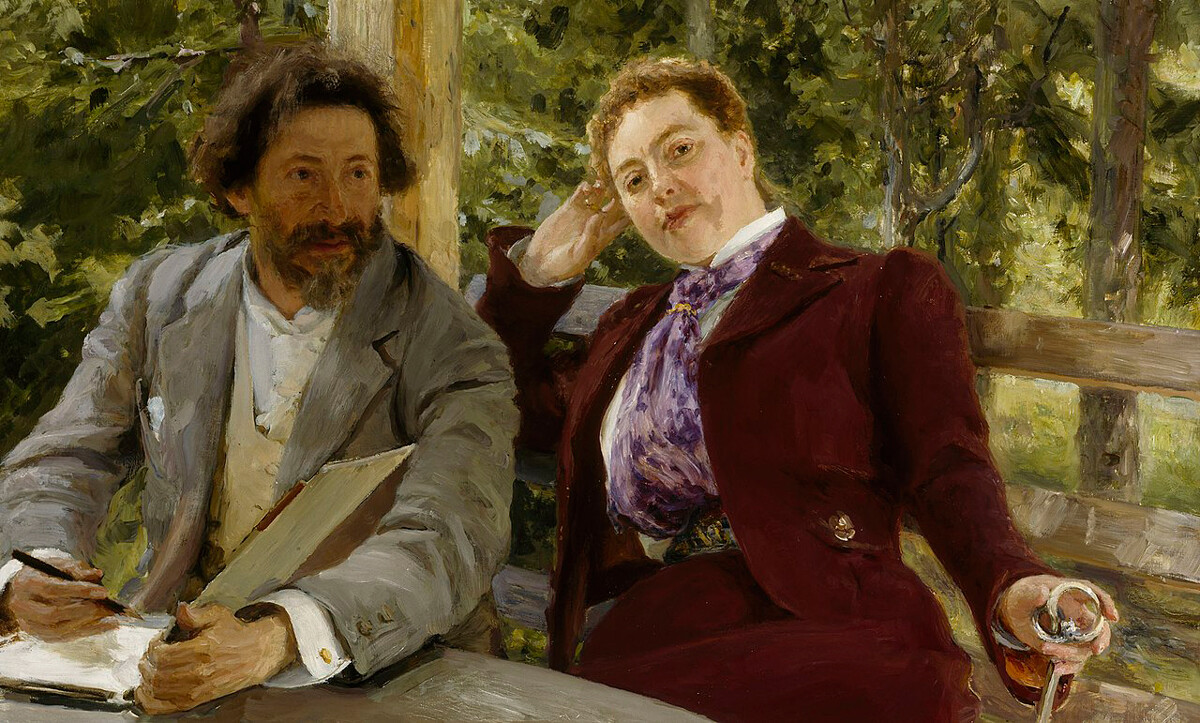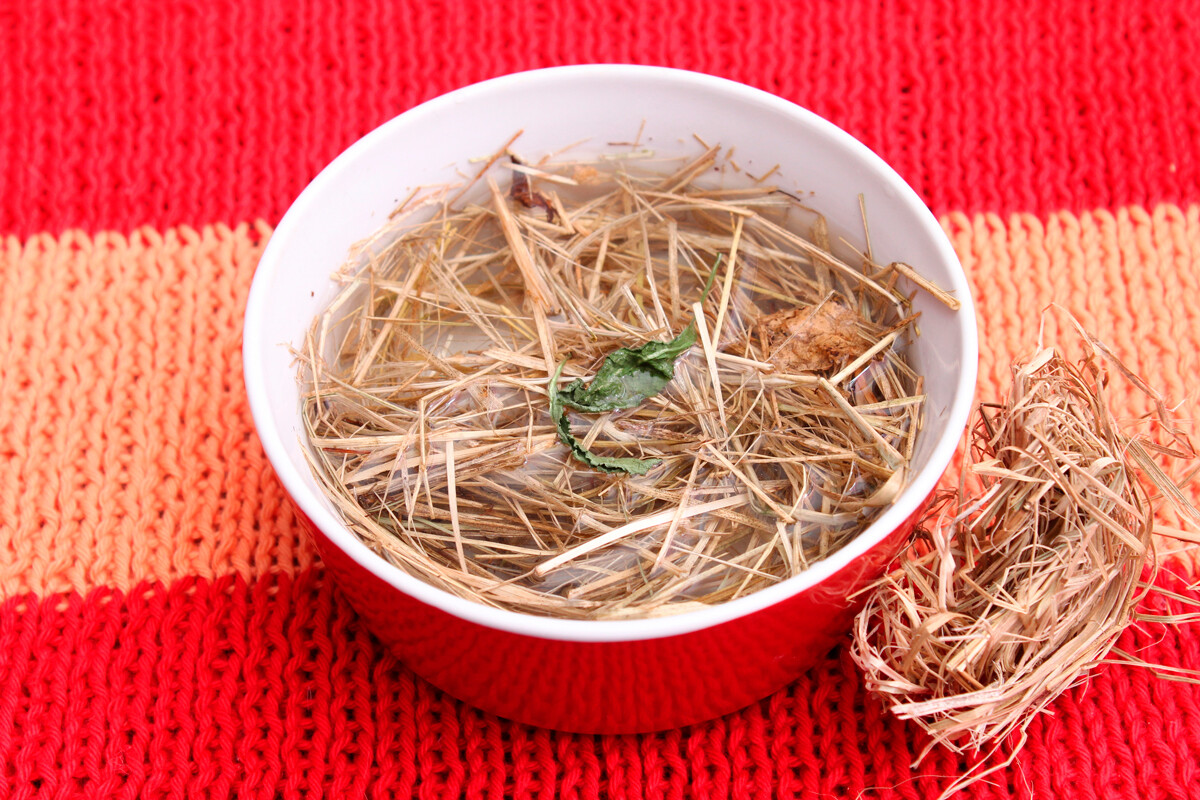
Guests at the country home of painter Ilya Repin (1844-1930) that was located a short distance north of St. Petersburg remembered with bewilderment the odd menu for lunch and dinner. The author of famous paintings such as Barge Haulers on the Volga and Ivan the Terrible and His Son Ivan served his guests cranberry steak, hay soup and other unusual meatless dishes. In fact, they were prepared according to his wife’s recipes.

Self-Portrait with Natalia Nordman-Severova, 1903, Ilya Repin.
Ateneum/Public DomainRepin’s spouse, Natalia Nordman-Severova, was an ardent vegetarian and a proponent of a raw food diet, which shocked many at that time. In 1911, she wrote Cookbook for the Starving and dedicated it to the “oversatiated.” Hay soup, a favorite of Repin’s, also made it into the book.
The recipe of this vegetarian delicacy is simple: hay is put in a pot along with finely chopped onion, bay leaf, pepper, and salt. All of this is brewed with boiling water, then placed for a short while on a burner. This soup, according to Nordman-Severova, provides satiety for 24 hours, is great for one’s kidneys, and is also suitable for making vegetarian borscht.

Hay soup.
Legion MediaIn 1912, during a lecture about the benefits of a vegetarian diet, Nordman-Severova noted: “I’m often asked – how is it that we eat hay and herbs? Are we chewing on them at home, in a stall, or at a meadow, and how much? Many take this diet as a joke; some even find it offensive that people could be offered food that prior was only fed to animals!”
Repin himself didn’t complain about the diet. To the contrary, in a letter to his friend he wrote, “A soup from hay, from roots, from herbs – that’s the elixir of life. Full satiety for nine hours. My body has rejuvenated and I have acquired more endurance when walking, stronger in gymnastics, and much more successful in art.”
Dear readers,
Our website and social media accounts are under threat of being restricted or banned, due to the current circumstances. So, to keep up with our latest content, simply do the following:
Subscribe to our Telegram channels: Russia Beyond and The Russian Kitchen
Subscribe to our weekly email newsletter
Enable push notifications on our website
Install a VPN service on your computer and/or phone to have access to our website, even if it is blocked in your country
If using any of Russia Beyond's content, partly or in full, always provide an active hyperlink to the original material.
Subscribe
to our newsletter!
Get the week's best stories straight to your inbox